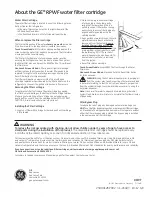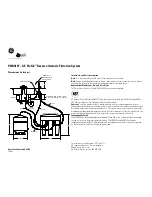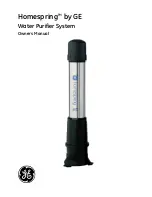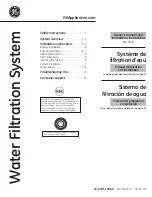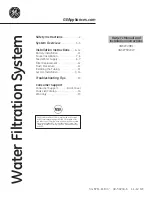
THANK YOU!
You have just purchased a quality Lubricator from Master Pneumatic.
With care in its installation and maintenance, you can expect it to have a long and economical service life.
Before you go any further, please take a few minutes to look over this information,
then save it for future reference and for the useful service information it contains.
350 Lubricator
Installation and Maintenance
MASTER PNEUMATIC, INC.
6701 -18 Mile Rd
. |
Sterling Heights, MI 48314 | Phone: (586) 254-1000 | Fax: (586) 254-6055 | Email: mp@masterpneumatic.com
STU-3026
MJF 10-24-13
(ECN 4904)
Installation & Operation Procedures
NOTE:
Read Warning Stuffer STU-A019 included in box with product before proceeding.
INSTALLATION:
1. Depressurize and lockout air pressure.
2. Upstream pipes must be free of excessive dirt and liquids.
3. Install the Lubricator as near as possible to the device it is to serve.
4. Install the Lubricator so that air flows in direction of arrow on Lubricator Cap (#3).
5. To insure a prompt feeding of lubricant, install the Lubricator parallel to the device being lubricated.
6. Lubricator must be installed vertically with Bowl at the bottom.
7. Lubricator should be installed downstream of any Filters or Regulators in the airline.
8. Multiple lubrication points from a single Lubricator are not recommended.
9. If installing using modular clamp connections A118-105 or A118-105M, torque screws 30-40 in-lbs.
OPERATION:
1. To fill Lubricator with oil, depressurize and lockout air pressure. Either remove Fill Plug (#10) or Bowl Assembly: Remove Plastic
Bowl Assembly (#7 Section view 2) by turning Shatterguard (#6 Section View 2) counter-clockwise; Remove Metal Bowl Assembly
(#7 Section View 1) by turning counter-clockwise. Add lubricant. Use Light Spindle Oil 60-120 SUS at 100F. Do not use compound
oils containing graphites, synthetic oil, soap fillers, etc.
2. Replace Fill Plug (#10) and Bowl Assembly (#7 Section View 1 or #6 & #7 Section View 2).
3. Turn on air pressure.
4. Adjust the oil feed rate by turning Adjusting Knob (#1) clockwise for less oil, counter-clockwise to increase oil delivery.
5. The Cartridge (#2) sight dome is used to monitor oil feed rate (drops/min).
6. Removal of Adjusting Knob (#1) will make Lubricator tamper resistant.
TO CLEAN OR REPAIR:
1. Depressurize and lockout air pressure.
2. If needed, the Fill Plug (#10) can be removed by turning counter-clockwise and cleaned with soap and water.
3. Remove Plastic Bowl Assembly (#7 Section view 2) by turning Shatterguard (#6 Section View 2) counter-clockwise.
Remove Metal Bowl Assembly (#7 Section View 1) by turning counter-clockwise.
3. Both the Plastic Bowl Assembly(#7 Section view 2) and the Metal Bowl Assembly (#7 Section View 1) can be cleaned with soap and
water.
4. If needed, the Cartridge Assembly (#2) can be removed and replaced.
Pull off Adjusting Knob (#1). Remove both screws from Lubricator Cap (#3) by turning counter-clockwise. Remove Lubricator
Cap (#3) and Cartridge Assembly (#2). Lubricate outside surface of rubber boot on new Cartridge Assembly with Lithium
grease, insert into head (#4). Hand start screws. This will ensure the screws use original threads. Torque screws 15-20 in-lbs.
5. When re-assembling, be sure all o-rings are correctly located. Lubricate o-rings with lithium grease. Torque Fill Plug (#10) hand tight.
Torque Plastic Bowl Assembly (#6 & #7 Section view 2) or Metal Bowl Assembly (#7 Section view 1) to 75-125 in-lb, and tab
must be within notch as shown in Fig 1 and 2.
6. If the Lubricator cannot be repaired by cleaning with soap and water the parts should be replaced.
7. Replace Plastic Bowls with Metal if any signs of crazing or cracking are observed.
SAMPLE PRODUCT NUMBERS:
L350D-2, -3, -4
BL350D-2, -3, -4
L350DH-2, -3, -4
BL350DH-2, -3, -4





